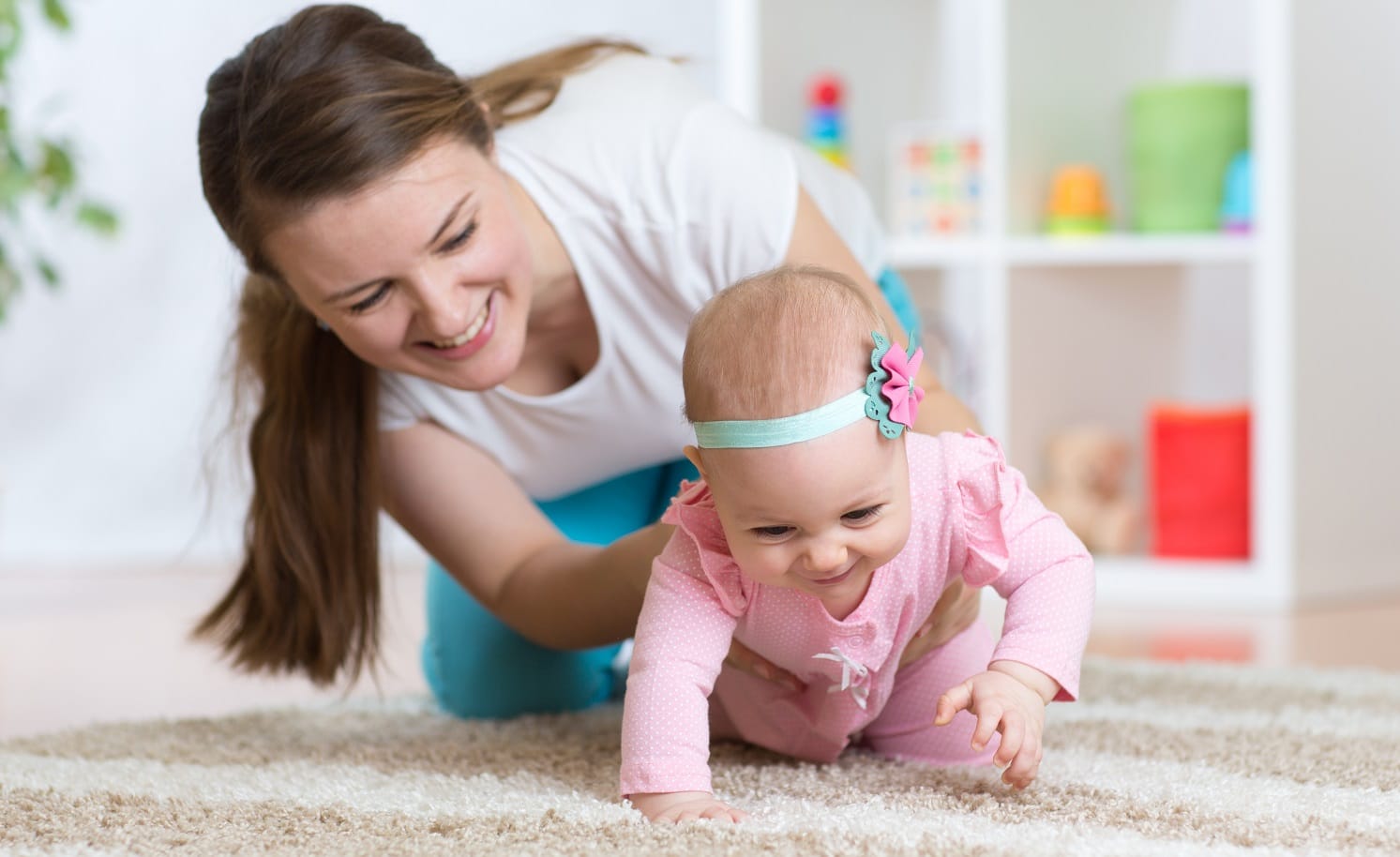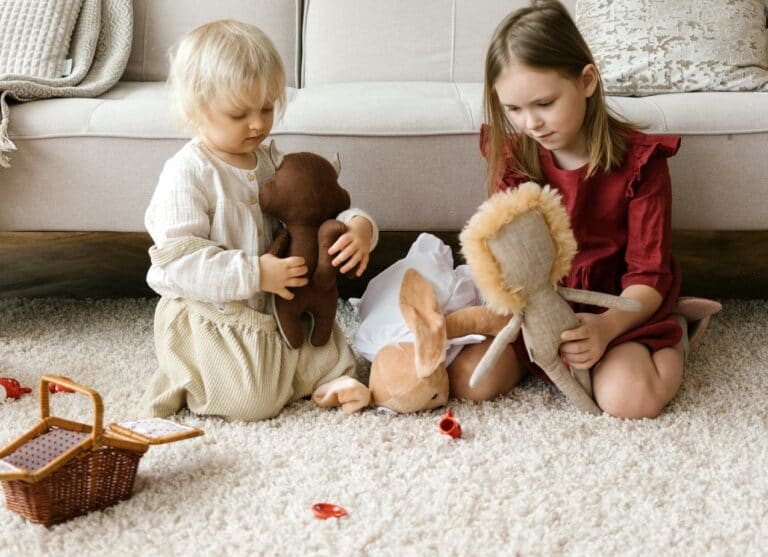When your child is crawling, you’re more excited than that! Crawling is an important milestone because it is an early step towards the child’s mobility. Babies are used to helping find and understand the world around children. But not all children crawl at the same age. To help you understand this more than this, this Momentum Post gives information about how to crawl and encourage you in infants.
In This Article
When babies start crawling?
Most crawling children are nine months. While some children get it in seven months and soon, others get this skill from their first birthday. In any case, crawling is not done overnight, and there is a series of steps or steps that lead to crawling.
Tips to help baby crawl
Crawling is a gradual process, where a child passes through many stages.
Stage catches head in one to two months: The first step towards crawling is the ability to hold the head while lying on the stomach. The child receives skills at the age of two months, while the muscles of the neck have the power to work against gravity.
The phase shakes the elbow in two to four months: Once the child gets up on the head, then it uses it with his hands. At the time of the abdomen, a small person forces the elbows to shake the ground.
Stage three – Support of body weight in six months: Once you are six months, push from the ground to the baby’s body and support your weight on all four organs (knees, hands, and feet). It’s almost like coming in crawling positions. The child is sitting independently for six months.
Stage Four – Pressure in eight months: Meaning of crawl, pushing the body forward using the arms while pulling the abdomen and legs together. The movement is a sign that the child is ready to crawl.
Stage Five – Creeps around nine months: The child is the primary muscle to move the body using four limbs. This means that the baby is now ready to crawl.
Crawling can be of different types because not all kids crawl in the same way. Each style has unique technology.
Different styles of crawling
The child can stick to one of the following methods or be optional among them:
Cross crawl
It’s a style of typical crawling where the baby keeps the hands and weight on the knees, move forward and move the opposite knee. This method is also called classic crawl and classic hand-and-knee.
Bear Crawl
It is similar to a cross crawl; the only difference is that the child spreads his legs straight and moves on the foot in the place of the knee like a calf.
Crab Crawl
Crossing the uniform crawl, the thing here is that the hand is in the back of the body in the event of crawling before the child’s body presses or moves sideways.
Commando Crawl
The child’s stomach touches the ground, while it is alternately opposite to the hands and feet. Because the soldiers are taught the crawling form, they are called Commando Crawling, Army Crawl, and Military Crawl. It is also known as abdominal crawl and pet crawl because the stomach is low and touches the ground.
In addition to the above crawling methods, infants may also use some rare forms.
Exercise to help your baby crawl
Encouraging the child to crawl can be quickly done from home. The following tips can help.
- Take time to stomach regularly because it is a solo activity in which there are many benefits. It strengthens almost every muscle in the baby’s body, which sends the path of complex activities like crawling. You recommend two to three sessions of stomach time with each course running at least five minutes each day. As the baby grows, the abdomen time increases.
- Work on infant curiosity and encourage them to reach out to things. This curiosity can be taken to improve their motor skills. Parents can keep things around children and then help them to reach out to the younger. This makes the child a strong motive to move his body, thus stimulating crawling.
- As she sits, she helps improve muscular endurance abilities. Once the baby is six months, keep it in a sitting position and keep it for a short time. Repeat everyday activity.
- Crap is also essential, even though it seems strange to crawl the child around the house! However, the crawling movement helps the child to move ahead and is vital to building a foundation for infant post-crawling skills.
- Once the child is crawled, it becomes interesting when the child becomes a full crawler. Playing hiding or ping-a-boo ensures that the child crawls a lot. If at any time the child stumbles and falls, he will cheer on to explain it and return to crawl it.
Benefits of crawling
Advantages of Crawling:
Crawling is beneficial for babies in many ways:
- It strengthens the muscles: Because the child needs a coordinated force to move the body, its muscles are finally strengthened. Crawling strengthens the shoulders, hands, and back muscles. It increases the muscles of the stomach and hips.
- Making money and balancing better: More power leads to better currency. Parents also notice that their children start crawling, so they better balance their bodies and look less ambiguous.
- It makes the joint more flexible: The spinal cord has an extended chain of motion and flexibility in the wrist and ankle joints.
- Development of the brain: Crawling neurons accelerate by speeding up all the functions and brain development.
- Vision Development: The children use their eyes as a guide to navigating around their surroundings while crawling. It leads to better eye-body compilation. Thus crawling helps in vision development, especially in telescopic vision (full-sight vision).
- Improved Body Structure: All hands are loaded with weight on the side. A well-shaped hand eventually leads to better grip.
- The child can wander in his passion. Therefore, parental participation in crawling does not end with the help only. In addition to being attentive to the child, you can do many things to ensure child safety.
Conclusion
Crawling is necessary for the child’s development because it is the foundation of other complex movements in life. The average age of crawling is nine months, while some children may get it before or after or prefer to run before crawling. In any case, it is best to let the child go in the way of its development. As a parent, you will be cautious about any developmental delays and, if necessary, contact the doctor.








![Home Renovation Guide [2025]](/app/uploads/2021/04/design-hacks-1-378x300.jpg)


